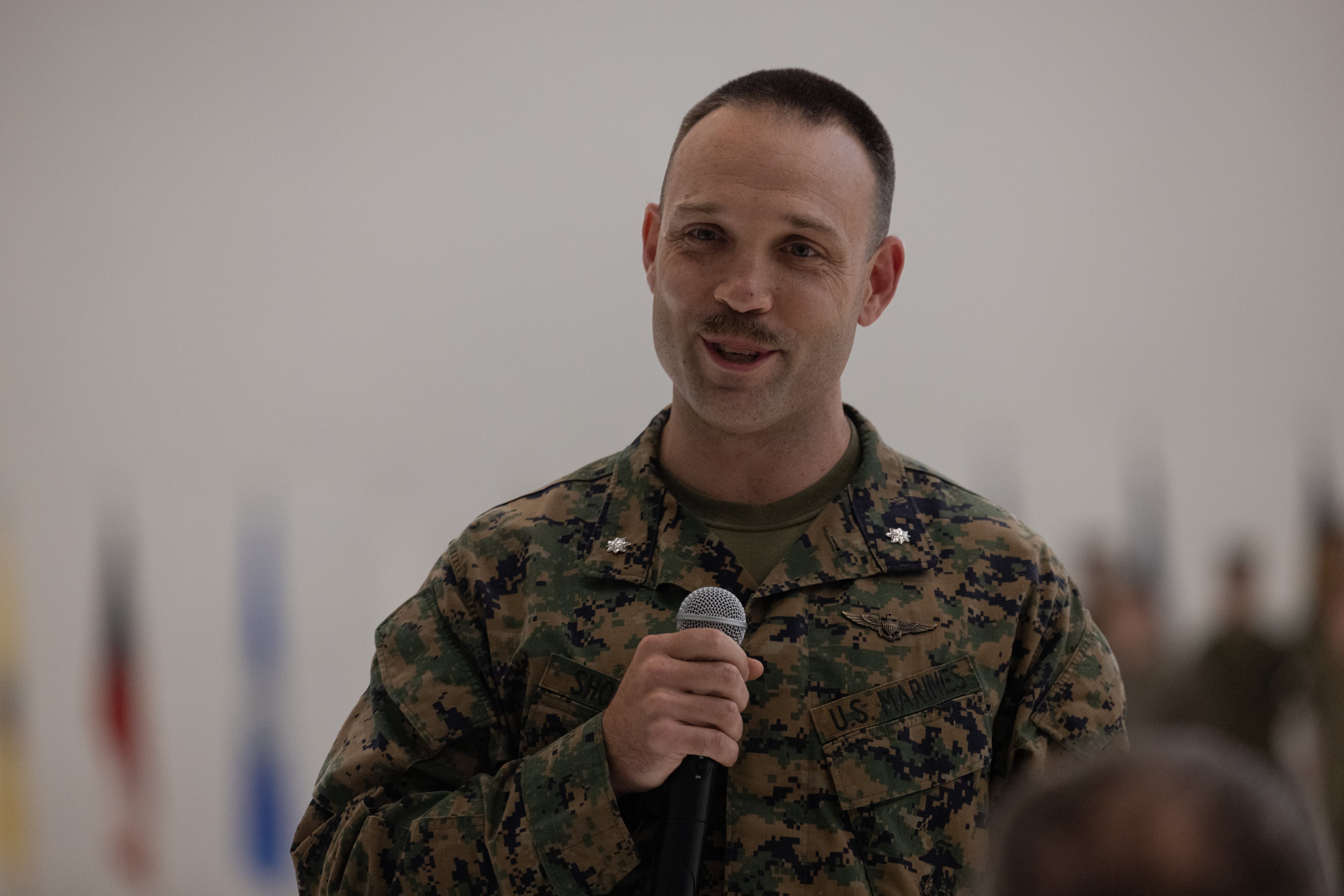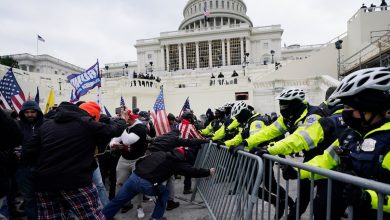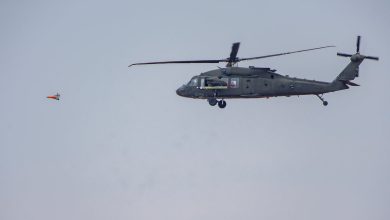The Marines have reactivated a fighter squadron with a lineage that traces back to Guadalcanal as the first East Coast squadron to fly the Corps’ newest fighter jet.
Marine Attack Fighter Squadron 251, or VMFA-251, received its first F-35C Lighting II Joint Strike Fighter in mid-September before the unit officially reactivated in a ceremony at Marine Corps Air Station Cherry Point, North Carolina, on Dec. 5, according to the service.
“Our immediate focus is working towards initial operational capability, which means that VMFA-251 has enough operational F-35C Lightning II aircraft, trained pilots, maintainers, and support equipment to self-sustain its mission essential tasks,” Lt. Col. Evan Shockley, squadron commander, said in a release.
Following those moves, Shockley said, the unit will pivot to reach full operational capability. The squadron, which was established during World War II, was deactivated in 2020 after 34 years as an F/A-18 Hornet squadron, according to the release.
RELATED
As a fifth-generation fighter jet, the F-35C and F-35B are linchpins in the Corps’ aviation future. Beyond the jet’s stealth and maneuverability, its sensor and information fusion capabilities not only allow the pilot to see across the battlespace but also enable the aircraft to act as both a sensor and shooter in the larger network of weapons and military systems.
Recent defense funding developments, however, could disrupt F-35 plans across the U.S. military. Under the proposed annual defense spending bill, Congress would fund 68 Lockheed Martin-made F-35s, but block the Pentagon from accepting 20 of those aircraft until military leaders solve problems with the fighter program, Defense News reported Tuesday.

Under the proposed National Defense Authorization Act for fiscal 2025, which lawmakers released Saturday, the Marine Corps would get nine F-35Bs, the short takeoff and vertical landing version. Nine aircraft carrier-capable F-35Cs, meanwhile, would be delivered to the Navy and Marine Corps.
Problems with the jet’s Technology Refresh 3 upgrades caused a delivery halt in mid-2023 that lasted nearly a year, while a logjam of new jets sat in Lockheed’s Fort Worth, Texas factory. The company is now delivering the newest F-35s with an interim version of the software that will immediately allow pilots to fly combat training missions, but not actual combat operations until 2025.
Congressional leaders have “grown frustrated” over these and other challenges with the program, a senior staff member of the House Armed Services Committee told reporters in May.
The Marine Corps’ long-term aviation plan seeks to fully field all variants of the F-35 by 2030, phasing out aircraft such as the AV-8B Harrier F/A-18C/D Hornet.
On Nov. 26, however, billionaire Elon Musk, the future head of President-elect Donald Trump’s new Department of Government Efficiency, or DOGE, took to his social media platform X, where he railed against manned fighter aircraft and took shots at the F-35 in particular.
“The F-35 design was broken at the requirements level, because it was required to be too many things to too many people,” Musk wrote. “This made it an expensive & complex jack of all trades, master of none. Success was never in the set of possible outcomes. And manned fighter jets are obsolete in the age of drones anyway. Will just get pilots killed.”
For years, military leaders in the Marine Corps, Navy and Air Force have touted the jet’s effectiveness in combat and as part of the larger battlefield network. At the same time, critics and declassified reports have shown security and reliability the platform has encountered over several years.
Meanwhile, Marines on Nov. 9 marked the first F-35C overseas combat strike during a mission against Houthi targets in the Red Sea, an operation carried out by 3rd Marine Aircraft Wing’s Marine Attack Fighter Squadron 314, or VMFA-314, out of Marine Corps Air Station Miramar, California.
Before fielding the F-35C, the U.S. military deployed the F-35A and F-35B. The “B” variant first saw combat in 2018 against the Taliban in Afghanistan and Islamic State in Syria, while military pilots first used the “A” variant in combat in 2019 against ISIS targets in Iraq.
The Marines stood up their first operational F-35B squadron on the East Coast in February, also at Cherry Point. As of July, the Corps boasted eight operational F-35B squadrons and two training squadrons, comprising more than 100 F-35B aircraft in total, Marine Corps Times previously reported.
In 2020, VMFA-314 became the first to fly the F-35C, with the unit hitting initial operational capability that year. Earlier this year, VMFA-311, also based on the West Coast, became the second F-35C squadron to reach that mark.
Todd South has written about crime, courts, government and the military for multiple publications since 2004 and was named a 2014 Pulitzer finalist for a co-written project on witness intimidation. Todd is a Marine veteran of the Iraq War.
Read the full article here





